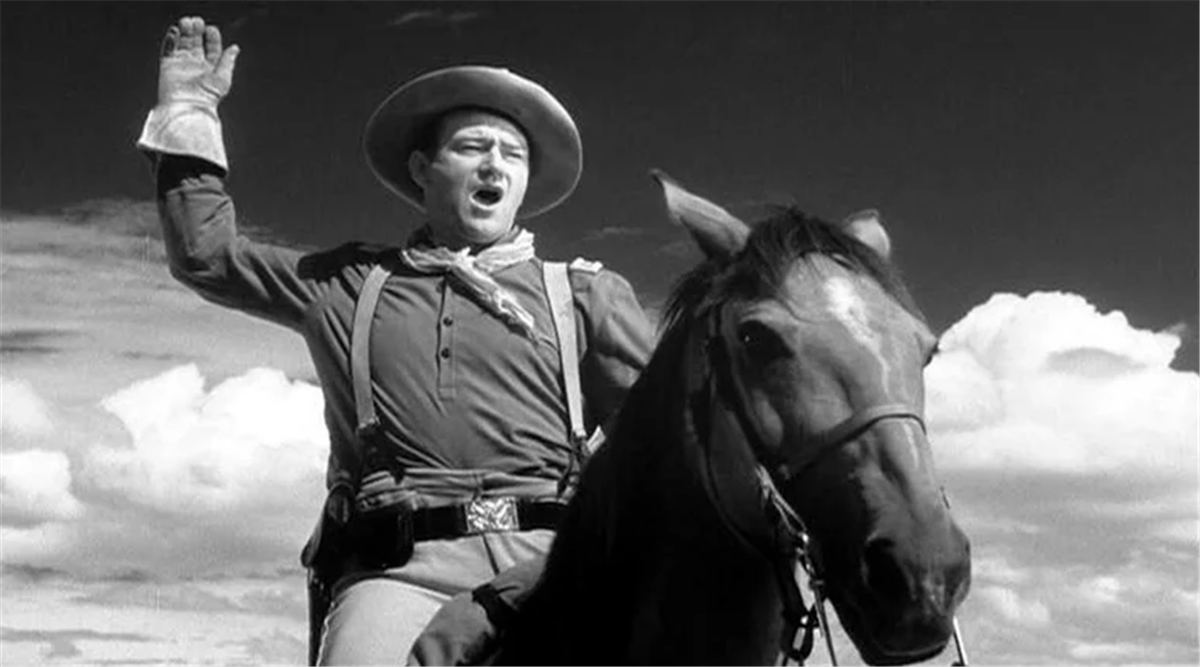John Wayne might’ve been full of macho swagger on the big screen, but off-screen he was given to fretting. A large portion of the blame for this could be placed at John Ford’s doorstep. The A-list Hollywood filmmaker was nearly instrumental in making Wayne a full-fledged movie star, but he’d made the actor earn it over the course of a decade in bit parts and supporting roles.
When Wayne finally broke through in Ford’s classic Western, “Stagecoach,” he was 32 years old and determined to make up for lost time. It was at this precise moment that his mentor joined the United States Office of Strategic Services to assist in morale building during World War II. Wayne notably sat out the war, which, in the absence of friendly rivals like James Stewart and Henry Fonda (who also enlisted), allowed him to become one of the biggest movie stars in America. But the films he top-lined between 1941 and 1945 weren’t anywhere near as distinguished as “Stagecoach.” It wasn’t until Ford returned from the war that he appeared in a first-rate picture (“They Were Expendable”), but he did so as second fiddle to star Robert Montgomery.
Perhaps more worrying to Wayne was Ford’s decision to cast Fonda as the star of his first post-WWII Western, “My Darling Clementine.” Fonda’s portrayal of Wyatt Earp would become viewed as the definitive take on the lawman. Wayne, meanwhile, wondered if he should form a production company and get busy developing his own projects.
Then 1948 happened.
At last, the Duke measures up to Henry Fonda

Has any actor had a better year than Wayne did in ’48? It’s hard to think of anyone stringing together three classics like “Red River,” “Fort Apache” and “3 Godfathers” over a 12-month span. The effect on the Duke’s career was tremendous. On a strictly commercial level, all three movies were hits, which cemented Wayne’s status as a box-office draw. But most importantly, the Ford-directed duo of “Fort Apache” and “3 Godfathers” allayed his fear that his filmmaking benefactor had lost faith in his ability to lead a picture.
“Fort Apache” was especially vindicating for Wayne. The first installment in Ford’s Cavalry Trilogy asked him to share the screen with Fonda as a co-lead, and the Duke more than held his own. As David Welky and Randy Roberts explain in their “John Wayne: Treasures” biography:
“‘Fort Apache’ came at a perfect time for Wayne’s career. Although critics failed to discern the significance of the film, they recognized its mass appeal. It was a solid box office success, a powerful movie, and a clear demonstration that John Wayne did not have to win the heart of a leading lady to stand out in a film. Although Ford still did not consider him in the same class as Fonda, Duke was narrowing the gap.”
Wayne was back in the saddle and riding tall. The following year, he would receive his first Academy Award nomination for Best Actor in “The Sands of Iwo Jima” and give one of his finest performances in Ford’s “She Wore a Yellow Ribbon.” He’d find more reasons to worry, but he remained a star until the end of his career.
